Finally!
PocketWizard is happy to announce they have received a file on record with Industry Canada for the legal sale of the MiniTT1 and FlexTT5 in Canada.
What does this mean?
PocketWizard MiniTT1’s and FlexTT5’s are now available for sale in Canada.
From: http://www.pocketwizard.com/news_events/news/canadian_approval/
thanks kas
cr
|
When you purchase through links on our site, we may earn an affiliate commission. Here's how it works. |


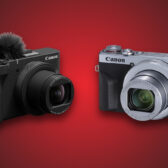
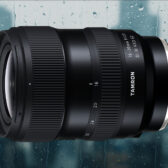
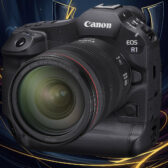
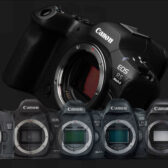

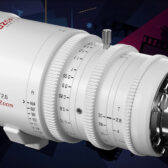

I’m still working in the “pre-radio days” with strobes (using olde timey sync cables and optical slaving), and I’ve been thinking about what to do with regards to radio triggers. And, even thinking about modernizing my whole strobe system (I’m using old Elinchrom mono heads that have analog sliders).
Along with PocketWizard’s Mini and Flex, I’ve also been checking out RadioPopper’s PX and Jr. Looks like RadioPopper is now available in Canada too: http://radiopopper.com/blog/2009/04/24/px-units-shipping-to-canada/
Any word on Canadian prices?
It looks like Radio Poppers do not fully work with the 5d MK II, you must use a 580 EX Series flash on the camera as well as radio popper to use ETTL.
The Pocket Wizards have a compatibility issue with 5D MK II as well, and a much more serious range issue when used with 580 series flashes, the range is extremely limited.
We can assume that future Canon Models like 1D MK IV will have the same issues with Pocket Wizard.
The work arounds sounds pretty complex to me, I just keep using the older Pocket Wizard Pluss II model, since there is no advantage to me and my 5D MK II / 580 EX II combination with the new model.
Ed, you’re right. But, Pocket Wizard has been fairly up-front with disclosing the limitations of the 5D2 and their new products. If you read the manual, with its updates, you’ll find that there are a lot of limitations with the advanced modes of the new PW system, regardless of camera. That said, they open up a lot of alternatives that IMHO make the system worthwhile.
What concerns me is that Canon is apparently putting some features in their new models that make it difficult for PW and Radio Poppers to work with ETTL. I did read about the improvements for the 5D MK II.
One fix for the PW range issue is to wrap your flash in mesh, apparently, there is no possibility of a permanent fix due to the frequencies used by PW being hosed by most of the Canon flashes. This is a big engineering error that takes away much of the range advantage. Requiring a Canon Flash to be on the 5D MK II along with the short range means little if any advantage to users like me who now use 3 580 EX II flashes.
If you read the manual, you’ll find out that there are several modes of operation where a 580EX must be in the hot-shoe of the on-camera PW, for no other role than as a data input device. This applies regardless of the camera underneath, so it’s safe to say that there are a lot of improvements yet to come.
The range issues are disappointing, no doubt, but PW would shoot themselves in the foot if they jumped to a frequency that didn’t work with their classic units. The classic units had a distance advantage since they weren’t hot-shoe mount, and from the sounds of it Canon has been letting the RF noise emissions climb upward with new products. Who’s fault is that?
Ed, you are aware that radiopoppers require the existing E-TTL II infrastructure to be in place. ie, regardless of the camera there must be a commander unit, be it a ST-E2 or a 550EX/580EX I or II with a radio popper transmitter attached to it attached to the camera either in the hot shoe or via TTL cord. As such radiopoppers do not have any compatibility problems, they’re just more expensive, though they are more effective, better range and slightly better reliability.
I believe the now released firmware for the pocketwizards have fixed the compatability with the 5D mk II
The big difference between them is that the pocket wizard reads the TTL signal from the camera. The radiopoppers read the IR signal from the commander unit converts that into radio signal and the radiopopper receiver at the other end reconverts it into IR signal, the radiopopper system sortof tries to impersonate a camera at the other end, and has to read the electrical signals from the camera, which varies some body to body (apparently).
I think that Canon needs to design for a lot less RF noise in their next flash model unless they want to loose additional customers to Nikon. Some shooters out there would really like to have the freedom of wireless ETTL (wedding photogs for one I guess), but wrapping their flashes in mesh or settle for 30 feet doesn’t seem like an option to me.
For Canon to be ignorant of the problems between their products and the new Pocketwizards looks to me like a bad idea. After all Pocketwizards are still the main choice for professional shooters and cameras like the 5D and 1D MK X are targeted at those people in general.
my guess on this is quite the opposite actually. the newer 430 does not have this issue and i would assume that future canon flashes will not as well…
Canon designed their flashes years ago, long before PW came along and selected the wrong frequencies for their units. When they were mounted off camera, the intereference was minimal, now with on-camera mounting, its very bad. This problem doesn’t apply to Radio Poppers which is better engineered.
As a electrical engineer, I do know that the frequencies and type of modulation play a big part in getting a clean signal thru a world that is full of electrical noise.
I would not put the problem on Canon, or at least, not all of it.
Yes, nicely put. I haven’t used Radio Poppers, so I only have a rough understanding of their operation.
BEWARE
I’ve read stories (on DWF) of these things breaking off, due to a plastic foot. I’m buying the old models until this gets straightened out.
I don’t see how the problems with the new Pocket Wizards are Canon’s fault. As Ed says, Canon designed their flashes a long time before mounting competition between wireless triggering systems pushed the development of the new Pocket Wizards.
More importantly, PW designed their product to specifically match to Canon’s (not the other way around) and were remiss in releasing this product to the market with its inherent interference problems. I don’t see why people are blaming Canon – they have no obligation here, the PWs contribute to the bottom line of Pocket Wizards, not Canon. It’s like buying Michelin tyres and blaming Ford because you can’t fit them on your Taurus.
PW have obviously been a great company in the past, but have done themselves and their loyal early adopters a great disservice by prematurely releasing a product that they would have known did not meet the high expectations built from the success of their previous products. It is only because of these expectations that they are able to charge such a premium after all.
People are now buying the new PW for their Canon 5D MK II and 580 EX flashes, expecting the ETTL to work. It doesn’t sound pretty. Undoubtedly, some of them don’t know what they are doing, but others sound pretty experienced.
http://forums.dpreview.com/forums/readflat.asp?forum=1032&thread=31846645&page=1